DIY vertical beds for cucumbers, pros and cons of growing cucumbers in vertical beds
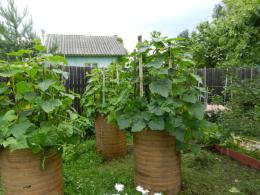
Cucumbers are a crop that is always appropriate on the table. Growing cucumbers is a simple task at first glance:
- sow the seeds
- water
- tie to the trellis
- protect from cold
- put away weeds
- water a few more times
- harvest
However, in practice everything is somewhat different. We sowed the seeds - they did not sprout, and if they sprang up, the cucumber seedlings were killed by fast-growing weeds or damaged by frost. I didn’t water it on time, the seedlings dried out. Before I had time to tie it up, the vines had already grown along the boundary and the cucumbers had taken over someone else’s area. Growing cucumbers in vertical beds is increasingly gaining popularity among gardeners. Let's try to figure out why this is needed, the disadvantages and advantages of the method.
Content:
- Why do you need a vertical bed, pros and cons
- Main types of vertical beds for cucumbers
- Do-it-yourself vertical beds for cucumbers, step-by-step instructions
Why do you need a vertical bed, pros and cons
In pursuit of a good harvest, gardeners show ingenuity and imagination. The idea of growing cucumbers and other vegetables vertically may have come to mind from someone who decided to combine limited space for plants with growing them in open ground.In addition, those who preferred vertical placement received several advantages at once:
- neat appearance of structures
- compact location and space saving
- minimal effort to remove weeds
- convenience when watering
- comfort during harvesting
In addition, many structures can be moved around the site, which cannot be done with a simple bed. Landings They are easy to protect from low temperatures and other undesirable natural phenomena.
But, as usual, it is not without its disadvantages and drawbacks:
- rapid drying of the soil due to the small volume
- soil depletion
- soil freezing in winter when growing perennial crops
- additional material and physical costs
Another disadvantage is that not every crop will grow and develop well in a vertical bed and is unlikely to produce a good harvest.
Plants that can be recommended for cultivation are:
- do not have a strong root system
- do not give the ground part with a large volume and mass of green parts
- do not form roots
Based on the above, you should not grow in vertical beds:
- potatoes
- corn
- carrots
- beets
- pumpkin
- cabbage
A vertical bed is suitable for:
- colors
- salad
- basilica
- cucumbers
- strawberries
- dill
Since for growing cucumbers If you need a certain vertical structure, then let’s now try to understand what a vertical bed for them might look like and what it can be made of.
Main types of vertical beds for cucumbers
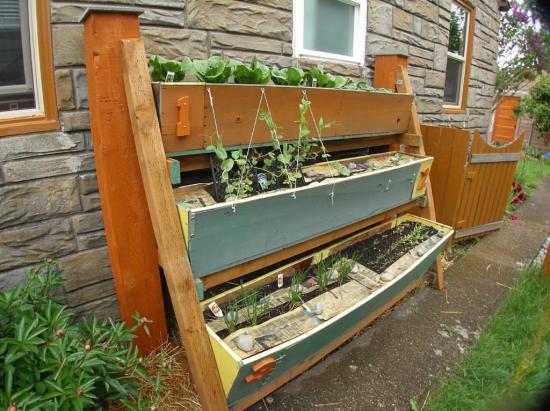
To obtain an abundant and high-quality harvest of cucumbers when growing in vertical beds, you need to take into account several important points:
- soil volume
- irrigation system
- way to protect against the cold
- garter method
In addition, when constructing vertical beds for cucumbers, the simplicity and low cost of construction will be important. The following designs will meet these characteristics:
- old iron or plastic barrels
- thick PVC pipes, cut lengthwise
- plastic bags or bags
- wooden boxes with the installation of a trellis - hut
To create these options you will not need too expensive materials, except barrels, pipes, wooden boxes, bags or bags, you need:
- drainage material
- fertile soil
- infertile priming
- organic residues
- covering film
- twine or rope
The basic principles of filling containers for growing cucumbers are as follows:
- first layer - drainage
- second layer - organic residues
- third layer - any soil
- fourth layer - high-quality fertile soil
In addition to the above, small-diameter PVC pipes for irrigation, wooden stakes or sticks may be useful. Of course, the easiest way is to place an old iron or plastic barrel in the right place, fill it in the order listed, place a wooden stick in the center to secure the covering film and garter the cucumbers. Sow cucumbers into the prepared barrel.
All that remains is to water and wait for the harvest, which will always be clearly visible and remain clean in any weather. Using the same principle, vertical beds are arranged in bags or bags.
It’s just more convenient not to place them in the right place, but to fix them on any vertical wall, which will not only support, but also protect the plants from the wind. The volume of the bags can be chosen arbitrarily, from 20 liters or more.The disadvantage of this design may be its fragility; the bags are unlikely to withstand exposure to sun, wind and rain for more than 1-2 seasons. Let's try to figure out how with your own hands make stronger and more durable vertical beds from wooden boxes or thick pipes.
Do-it-yourself vertical beds for cucumbers, step-by-step instructions
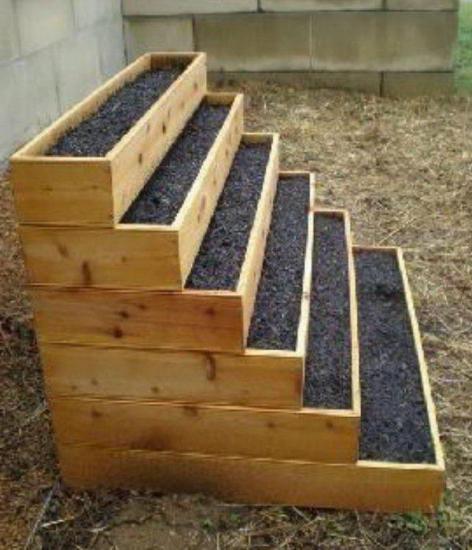
Creating a vertical bed in wooden boxes with a tent
Required:
- 1 - 2 ready-made boxes measuring about 0.3 m wide, about 0.5 m deep, the length is arbitrary, but we can recommend from 0.6 m to 1.2 m or wooden boards for them
- wooden slats for tent
- fishing line or twine
- Lutraxil
Before starting work, you need to decide whether cucumbers will be grown in one or two rows. The shape of the tent also depends on this. When grown in one row, one box will be enough and the tent will be pitched in this case.
Step-by-step instruction:
- put together boxes in any way from boards no thicker than 10 - 15 mm, or select ready-made ones
- choose a place and install them on a flat area; when growing in one row, one box is enough, or for two rows, install two boxes with the long side facing each other
- put together a frame for a hut from wooden slats or slats, for one row of cucumbers with one straight and one inclined side, for two rows of slats, install the slats in a “house”, the height of the hut is regulated by the length of the lashes, but 1.6 - 1.7 m is quite enough
- Fix the lower transverse strip so that 70 - 80 cm of the ends of the longitudinal strips are free
- set up a tent over the boxes
- Attach a roll of lutraxil to the top bar; if necessary, it can be straightened or rolled up
- As the cucumbers grow, pull the required number of rows of fishing line
- fill the boxes with soil
- plant cucumbers at a distance of 20 - 25 cm
The advantage of such a bed is durability, compactness combined with convenience, the growth of the vines is strictly vertical and they are not damaged either when people or pets move around the site, or when harvesting. The disadvantage of such a bed comes down to the need to have skills in working with wood and some material costs.
In cases where it is not possible to put together wooden boxes yourself, you can use drawers from an old chest of drawers or small bedside tables. If there is no old furniture, then instead of boxes, a piece of thick PVC pipe cut crosswise into two parts will do.
To understand how suitable the method of vertical cucumber beds is for you and your plot, you need to create one or two beds and compare it with growing cucumbers in the usual way. It is possible that if there is a large plot of land, the creation vertical beds irrelevant, but in a tiny courtyard of two to three hundred square meters they are simply irreplaceable.
Video about vertical beds for cucumbers:

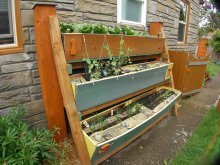
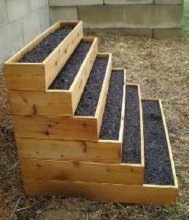

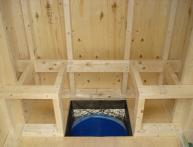


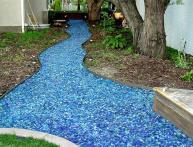
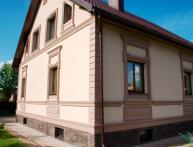

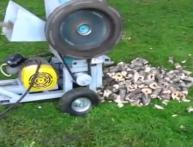
Comments
This year I planted cucumbers in a barrel (as in the first photo), in a greenhouse and simply in holes on the ground. The plants planted in a vertical bed were significantly faster in growth than all the others, and we picked the first cucumbers from there. I really liked this method, next summer I will only plant it this way. And space is saved, and the harvest is good, and the fruits are clean))). But I just had this misfortune - ants started in a barrel, and as soon as they got there... And how do I get them out now?